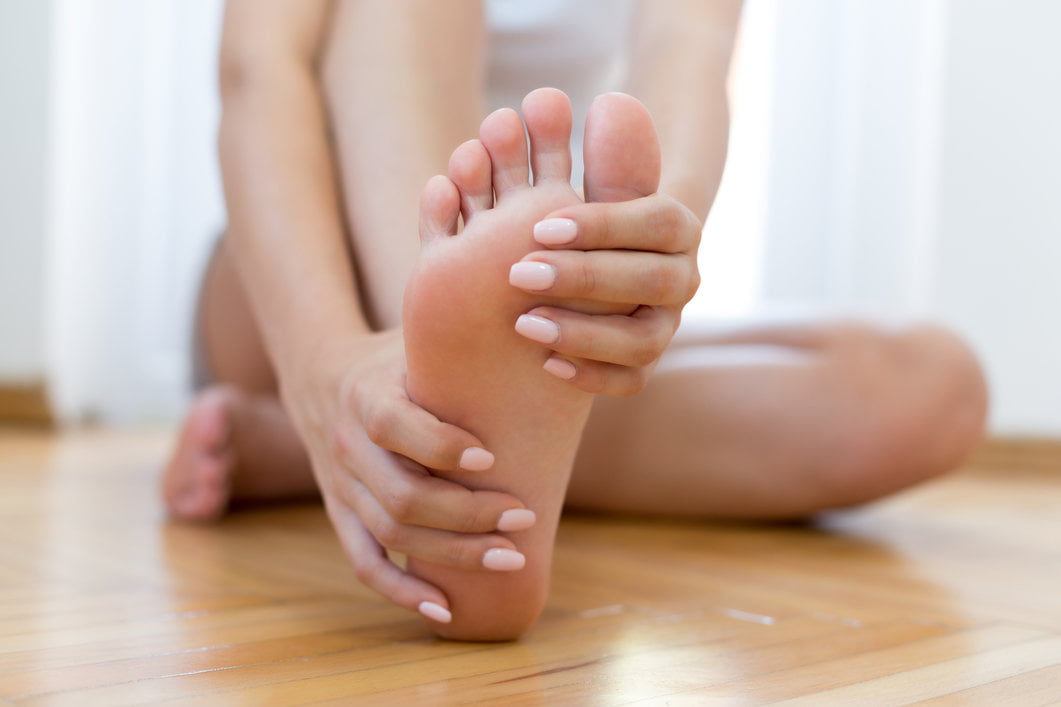Peripheral neuropathy
is a condition that can slowly deprive your health, your mobility, and your ability to do the things you love to do.
The pain associated with peripheral neuropathy is bad enough. But once numbness starts to set in and you can no longer feel your feet beneath you, your risk of developing ulcers and infections, falling, and suffering other serious complications goes through the roof.
True, revolutionary new therapies are helping us restore a much higher level of nerve function to neuropathy sufferers than we ever could before. But let’s be clear—this is still a very dangerous, progressive condition that often causes permanent damage to nerves in the feet. And the longer you let it progress, the harder it is to manage and reverse.
That means that identifying the early signs of the condition and taking important steps toward results
immediately is of critical importance.
You Don't Have to Suffer With Neuropathy Pain Anymore
Discover Innovative Therapies
Our nonsurgical therapy combines cell signaling therapies to provide significant relief from your symptoms



Symptoms
Every nerve in your peripheral system has a specific function, so symptoms depend on the type of nerves affected.
Nerves are classified into:
- Sensory nerves that receive sensation, such as temperature, pain, vibration or touch, from the skin
- Motor nerves that control muscle movement
- Autonomic nerves that control functions such as blood pressure, perspiration, heart rate, digestion and bladder function
Signs and symptoms of peripheral neuropathy might include:
- Gradual onset of numbness, prickling or tingling in your feet or hands, which can spread upward into your legs and arms
- Sharp, jabbing, throbbing or burning pain
- Extreme sensitivity to touch
- Pain during activities that shouldn’t cause pain, such as pain in your feet when putting weight on them or when they’re under a blanket
- Lack of coordination and falling
- Muscle weakness
- Feeling as if you’re wearing gloves or socks when you’re not
- Paralysis if motor nerves are affected
If autonomic nerves are affected, signs and symptoms might include:
- Heat intolerance
- Excessive sweating or not being able to sweat
- Bowel, bladder or digestive problems
- Drops in blood pressure, causing dizziness or lightheadedness
Peripheral neuropathy can affect one nerve (mononeuropathy), two or more nerves in different areas (multiple mononeuropathy), or many nerves (polyneuropathy). Carpal tunnel syndrome is an example of mononeuropathy. Most people with peripheral neuropathy have polyneuropathy.
PRP Applications for Neuropathy
To help reduce the pain of neuropathy and improve nerve function, PRP is sometimes injected into areas such as your joints and the ends of nerves. We customize the application of PRP according to your neuropathy symptoms and the type of pain you’re experiencing.
Research shows that when PRP is introduced to injured nerves, it encourages repair and regeneration of nerve tissue. The result is a reduction in neuropathic pain and an increase in sensation. In studies, some patients have reported notable reduction of pain within the first two weeks of therapy.
PRP may be used for various forms of neuropathy, too. It can be helpful in resolving carpal tunnel syndrome, sciatica, or other mononeuropathies. Plus, the therapy may help in cases of diabetic neuropathy, as PRP can set into play and entire cascade of events that lead to nerve repair.
EPAT Therapy for Neuropathy
has shown to be very effective for speeding up the healing process and reducing pain more quickly than other methods. It is also commonly known as Shockwave Therapy.
Unlike surgery or other medical offerings, this approach is non-invasive and targets acoustic pressure waves into the injured tissue and nerve area to improve blood circulation and stimulate the body’s own metabolic processes to accelerate healing.
EPAT stands for Extracorporeal Pulse Activation Technology, and it is an excellent way to help diabetic and peripheral neuropathy without the side effects of medication and patients do not require any downtime between therapy sessions.
For neuropathy in the feet, a trained technician will use an EPAT or Shockwave Therapy Machine to help the bottom of the foot (Plantar area) first, and then move up to the peripheral nerve path to encourage blood flow to the lower extremity.
In most cases, 3 to 5 separate EPAT therapy sessions performed one week apart is recommended for a favorable outcome.
FDA-Cleared LASER for Relief of Pain, Injuries & Neuropathy
Class IV lasers are an effective and low-cost adjunct to therapy for acute and chronic pain and injuries, that not only relieve pain but also reduce inflammation and swelling, promote lymphatic drainage, and enhance faster healing for injuries, as well as diabetic ulcers and other wounds.
Our Class IV high-power infrared laser therapy is the first FDA-cleared medical laser of its’ kind and is widely accepted in the health community as the perfect option for painful conditions that are not successfully addressed from medicine and surgery, and an obvious choice for those individuals who wish to reserve drugs and surgery as a last resort for addressing their condition.

7 Foods to Help Fight Neuropathy Pain
The following seven foods can help fight neuropathy and improve the symptoms that you feel in your arms and legs:
-
Try to have a serving of fruit daily
-
Vegetables
-
Whole grains unprocessed
-
Nuts
-
Legumes
-
Omega-3–rich foods
-
Lean proteins

Get Started
Call us at (407) 381-4040 to reserve an appointment. Prefer to text? You can do that too! Just click here from your phone to send a text.
You can schedule an exam here:


